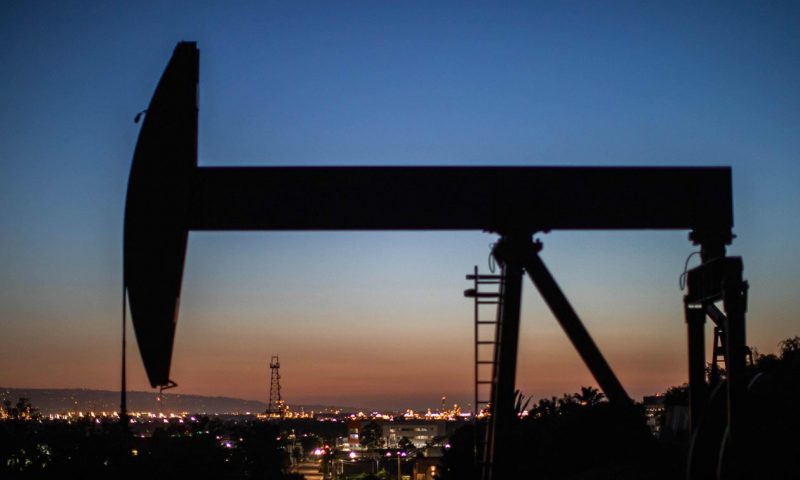OPEC’s 2021 oil-demand growth forecast unchanged
Oil futures ended higher Thursday, with U.S. prices back above $70 a barrel as traders digested the latest data on domestic petroleum supplies and demand.
On Wednesday the U.S. government reported a weekly jump in U.S. gasoline inventories and a fall in implied demand for the fuel, pressuring West Texas Intermediate crude prices for the session.
On Thursday though, oil prices traded mostly higher, after seeing a brief drop toward the session lows around the time news related to Iranian sanctions emerged. The Wall Street Journal reported that the Biden administration lifted sanctions on more than a dozen former Iranian officials and energy companies.
Talks between world powers and Iran, in an effort to revive the 2015 nuclear deal, however, are ongoing.
West Texas Intermediate crude for July delivery CL00, 0.18% CLN21, 0.17% rose 33 cents, or 0.5%, to settle at $70.29 a barrel on the New York Mercantile Exchange after trading as low as $68.68. Front-month prices marked a more than two-year high, settling at a level not seen since October 2018, according to Dow Jones Market Data.
August Brent crude, the global benchmark, BRN00, 0.10% BRNQ21, 0.08% added 30 cents, or 0.4%, at $72.52 a barrel on ICE Futures Europe, the highest since May 2019.
The market seems “convinced” that both Brent and West Texas Intermediate crude “deserve to be traded above $70 dollars under the current demand trajectory, and maintaining these levels shows that patience prevails against last week’s gasoline inventories upset,” said Louise Dickson, oil markets analyst at Rystad Energy, in a daily note.
The Energy Information Administration on Wednesday reported a 5.2 million-barrel fall in domestic crude inventories for the week ended June 4, but also said gasoline stocks climbed by 7 million barrels. Meanwhile, the amount of finished motor gasoline supplied for that week, a proxy for demand, fell by 666,000 barrels to 8.48 million barrels a day.
The rise in U.S. gasoline stocks is “a reminder that the journey towards normal, pre-pandemic oil consumption levels is not a straight route.”— Louise Dickson, Rystad Energy
The rise in U.S. gasoline stocks is “a reminder that the journey towards normal, pre-pandemic oil consumption levels is not a straight route,” said Dickson.
n a monthly report released Thursday, the Organization of the Petroleum Exporting Countries left its forecast for growth in oil demand this year unchanged. It expects demand to grow by 6 million barrels a day, with total oil demand at 96.58 million barrels a day.
U.S. oil futures had lost ground Wednesday. Brent on Wednesday had settled unchanged for the session.
On Nymex Thursday, July gasoline RBN21, -1.45% tacked on 0.4% to $2.21 a gallon and July heating oil HON21, -1.56% rose nearly 0.7% to $2.14 a gallon.
The U.S. gasoline demand data were a bit skewed, said Phil Flynn, senior market analyst at The Price Futures Group, as it came in the aftermath of the Colonial Pipeline shutdown last month.
“Everyone filled their tanks early,” he said in a Thursday report. Then “we saw a flood of imports from Europe, and the waiver of the Jones Act had supplies moving in places where they do not normally move.”
Meanwhile, another analyst attributed the rise in gasoline inventories to rainy weather over the eastern half of the U.S. over Memorial Day weekend.
“Refiners were running at accelerated levels heading into the beginning of summer driving season, but rain pummeled a large part of the area from the Midwest to East Coast, with New Jersey getting over 3 inches of precipitation on Saturday and Sunday,” said Robert Yawger, director of energy futures at Mizuho Securities, in a note.
Also on Nymex, prices for natural gas finished higher after the EIA on Thursday reported that supplies of the fuel rose 98 billion cubic feet for the week ended June 4. That was generally in line with the average increase of 95 billion cubic feet forecast by analysts, and came in above the five-year average build of 92 Bcf, according to a survey conducted by S&P Global Platts.
July natural gas NGN21, 3.27% rose 2 cents, or 0.6%, to settle at $3.15 per million British thermal units, looking to extend its gain to the highest settlement since February.

